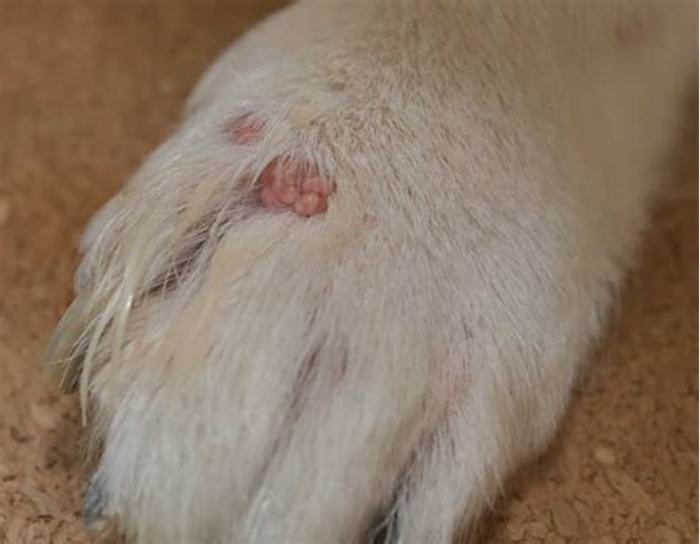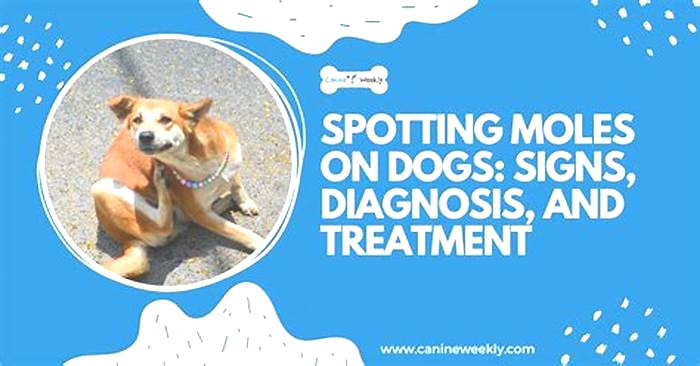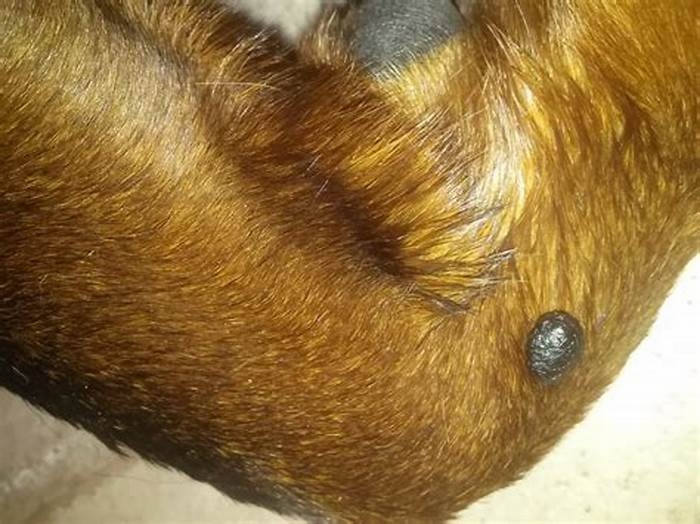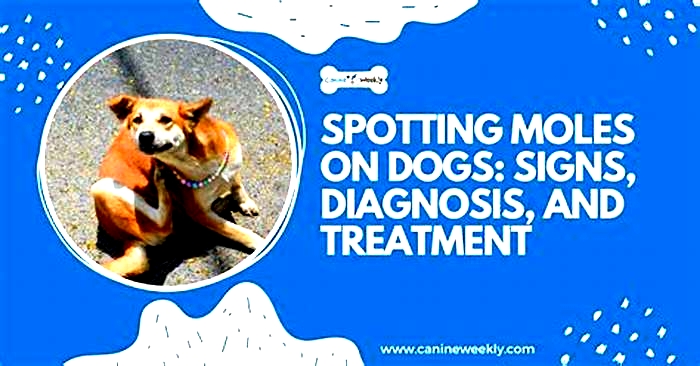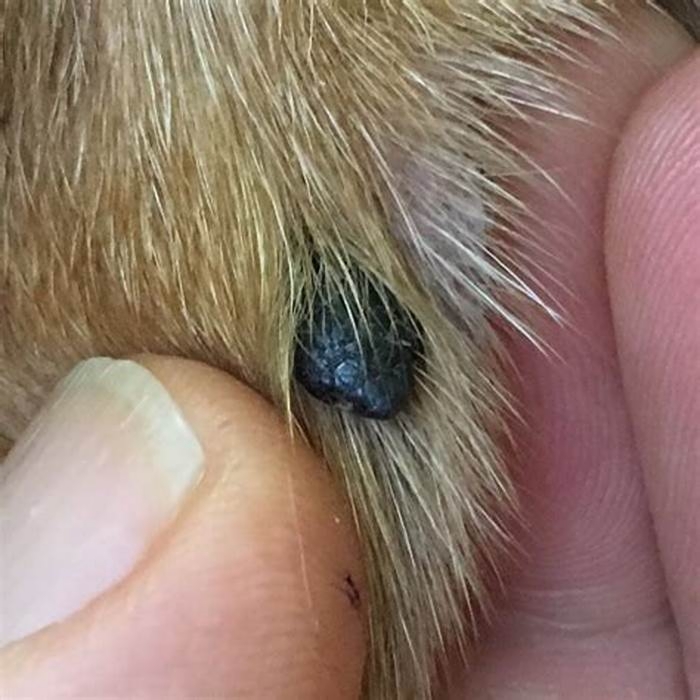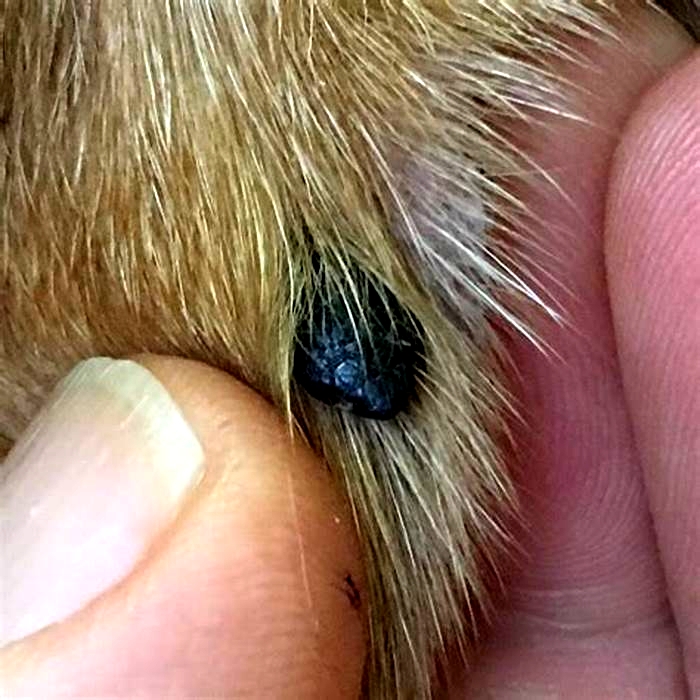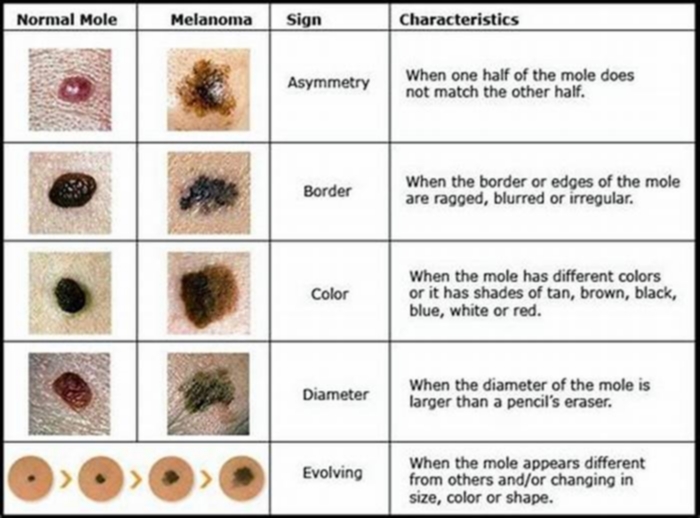Can moles hurt my dog
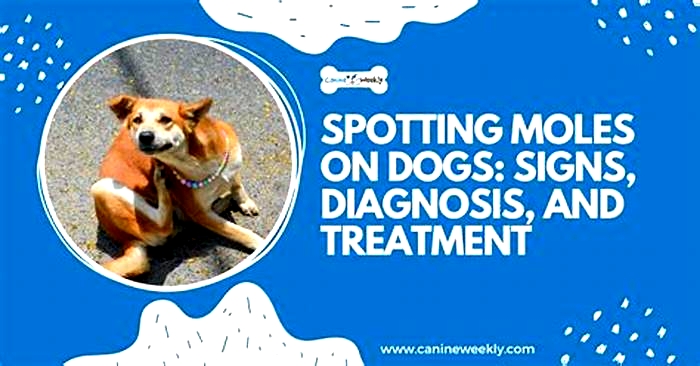
Spotting Moles on Dogs:Signs, Diagnosis, and Treatment
This post may contain affiliate links. If you click and buy we may make a commission, at no additional charge to you. Please see our disclosure policy for more details.
You might have observed some dark spots that may be flat or raised, mostly around the neck, chest, or back of your dogs.
Moles in dogs are common but not as common as in humans. Moles in dogs are generally treated by surgical methods.
Moles in dogs are often harmless, but if there are changes in their size, shape, or any other form, they must be checked by a veterinarian.
You are in the right article if you are worried about your dog having moles or want to know the signs, diagnosis, or treatment.
This read will provide complete information regarding moles in dogs and every need-to-know detail.
Can Dogs get Moles?
Yes, dogs can develop moles, and it is very common, especially for dark-pigmented skin dogs, just as not common as humans.
Most often, they are not harmful, but as in human cases, changes in shape, size, or color in moles can be a sign of some disease and must be checked as soon as possible.
A mole, also called a nevus, is found on dogs body parts that are prone to trauma, such as the neck, chest, or back, especially in older dogs.
Does my Dog have Moles?
Determining if your dog has moles could be tricky. Normal moles do not display significant discomfort and are hard to notice at first.
Moles are different from skin tags. Moles are broad and flat with a dark texture and sizes around a quarter inch in diameter.
They develop in both male and female dogs, although male dogs tend to have them more often than their female counterparts.
Mast cell tumors, carcinoma, and malignant melanoma are three types of cancerous skin lesions that are confused with moles but are not.
Also, ticks are confused with moles due to their similar appearance, and people try to pull that off the dogs skin, thinking it is a tick. Use magnifying equipment to determine, and if unsure, visit a veterinarian.
Ticks have legs out and can be recognized by this, but if you try and pull out a mole thinking its a tick, it will be painful, cause irritation to your dog, and may result in bleeding.
To be cautious, its always wise to get your dog checked to determine if your dog has developed a mole or something else, as things looking like a mole can be a cancerous tumor.
Why do Moles Grow in Pets?
There seems to be no exact reason why moles and other similar diseases like skin tag develops in dogs, but there are some factors that may lead to these skin irregularities. They are:
Genetic
The easiest way for your dog to develop moles is through genetics. These moles or skin issues generally run in the family, and some dogs are more prone to get this than other breeds.
Check-ups and tests prior to adoption can show if the dog has been exposed to some diseases or irregularities. Breeds like Golden Retrievers, Irish Setters Dobermans are some dogs who tend to develop mole more often.
Medicinal Side Effects
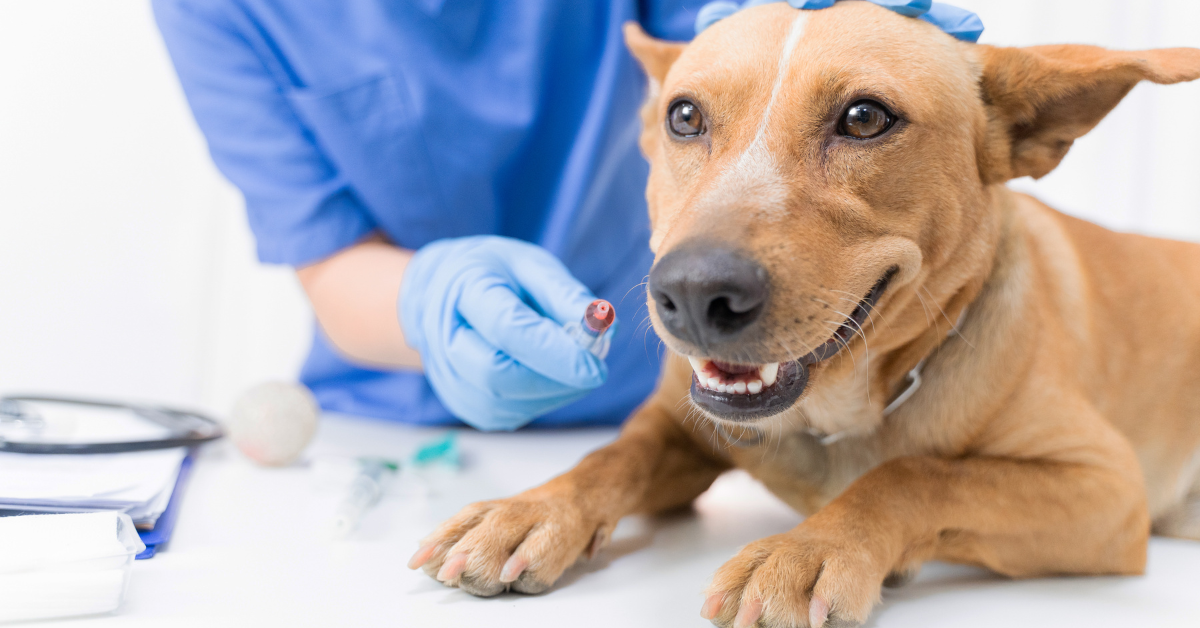
Some medicines have side effects that can lead to skin infections, moles, skin tags, and other irregularities.
Age Factor
Age is also a factor, as older dogs tend to get moles more often than small dogs. Moles develop from the age of 5 to 11 years.
How do I Treat my Dogs Moles?
The benign moles are often harmless and do not require much treatment until the dog is feeling discomfort or the moles start changing their size or shape.
If the vet feels the need to treat the mole or it occurs to be a fatal disease like cancerous, then the mole can be removed surgically by giving just anesthesia or painlessly frozen by cryosurgery.
After surgery, your dog can get back to a regular routine. Dogs might need an e-collar around their neck or the surgical area to prevent them from scratching or licking the surgical wound.
Are Moles Similar in Dogs and Humans?
Moles are mostly similar in all species, be they animals or humans. Dog moles are very similar to humans.
Most moles appear early in a persons life, meaning that animals with shorter lifespans will typically develop their moles in the same space of time that humans do.
In canines, moles growth has melanin in a higher concentration level around the surrounding tissue, making the color of the mole darker.
Moles in both humans and animals can turn out to be cancerous, and any irregularities should be brought to medical attention without delay.
FAQs
Q. When should my dog see a vet for a mole?A: If a mole is changing its shape, size, or color, then you should see a veterinarian. If the mole is in a place that bothers the dog, you can remove it easily.
Q. Is it OK for dogs to have moles?Yes, it is totally okay for dogs to have moles. Moles in dogs generally appear in the chest, face, or back of the body.It is mainly unharmful, and it is up to you if you want to remove it.
Q. How do you stop a mole from bleeding on a dog?To stop the bleeding, take a clean towel or cotton cloth and apply pressure on the mole. When the bleeding stops, clean it with mildly warm water.Stopping the bleeding also depends on the type of wound; minor cuts can be stopped by applying pressure. Big cuts will take time; while applying pressure, take the dog to a veterinarian.Bleeding from moles can happen if your dog has scratched or bitten the mole or a cut from sharp objects.
Conclusion
Your canine partner can develop moles, which are very common and harmless. This article provided information about the signs, diagnosis, and treatment of moles in dogs.
We hope reading this article clears your doubt about why dogs have moles, how you can treat them, and whether it is dangerous or not.
If your dog develops a mole, check them frequently and take them to a veterinarian if any changes take place in moles.
Till then, take care and happy petting.
[wpdatatable id=68 responsive= stack responsive_breakpoint=phone/]
Dr. Lillian is a D.V.M. passionate about promoting awareness of dogs. She shares her expertise through her blogs on canineweekly.com and provides animal care services, including internal medicine, dermatology, and emergency care. Dr. Lillian is committed to contributing to animal welfare.
Are Moles Poisonous to Dogs? Learn the Facts Here
Are you wondering if moles are poisonous to dogs? Whether in your garden or in the park, its important to know the facts about moles and your pets safety. This article will provide you with the answers you need to keep your furry friend safe from the potential dangers of moles. Read on to find out if moles are indeed poisonous to dogs.
Can Dogs Eat Moles?
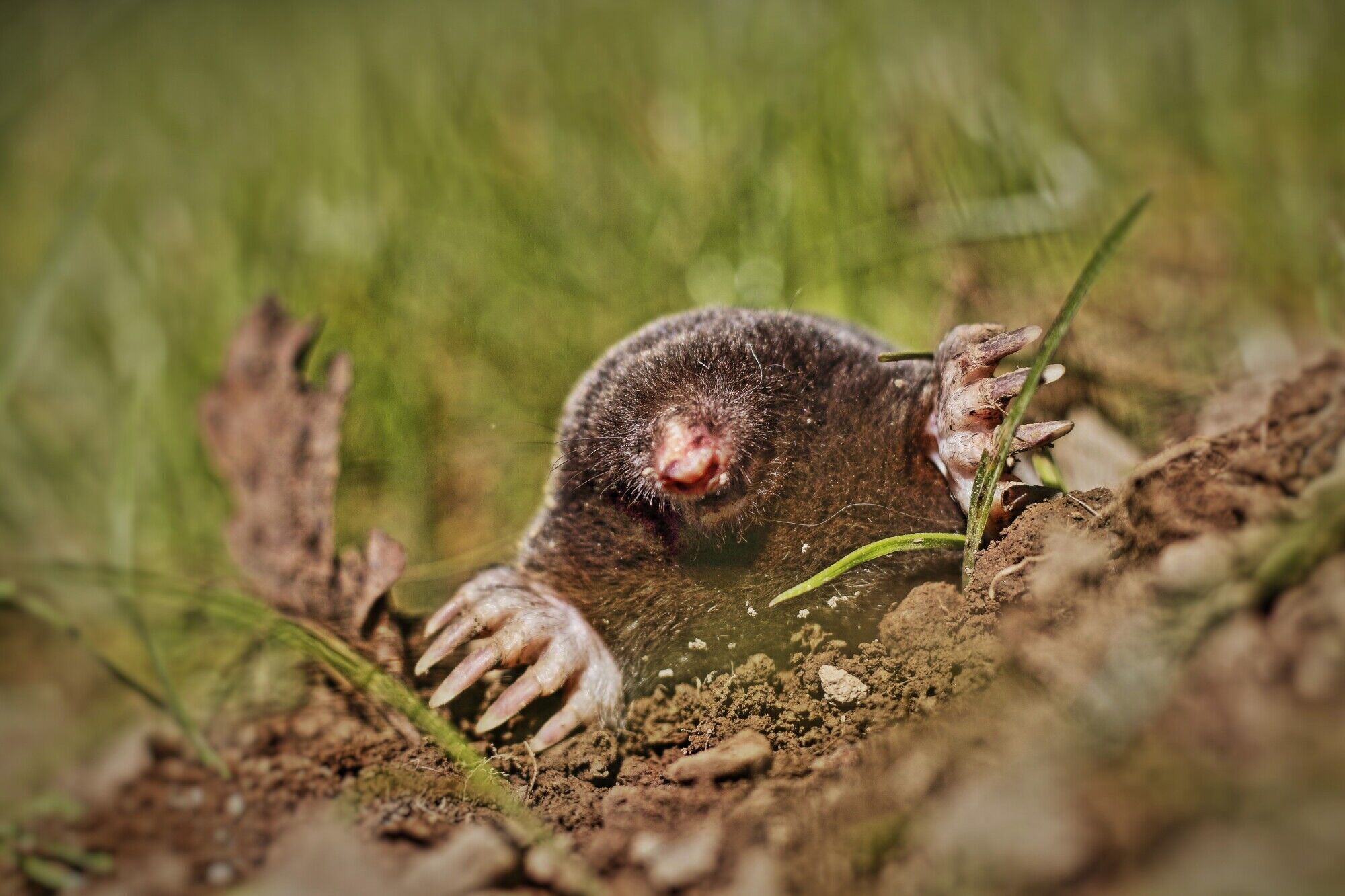
Moles are small animals that often live underground and feed on worms and grubs. While they are not poisonous to dogs, they are not a recommended food source. In addition to the potential risk of parasites, moles can be a choking hazard. If your dog has killed and eaten a mole, it is unlikely that he will get sick. However, it is best to keep an eye on him for any signs of digestive distress, as it is possible that the mole contained parasites or other contaminants. If your dog does start to show any signs of illness, it is important to take him to a veterinarian for a checkup.
Bottom Line: My dog killed a mole, will he get sick? While it is unlikely, it is best to monitor your dog for any signs of illness and take him to a vet if necessary.
Can Moles Make Dogs Sick?
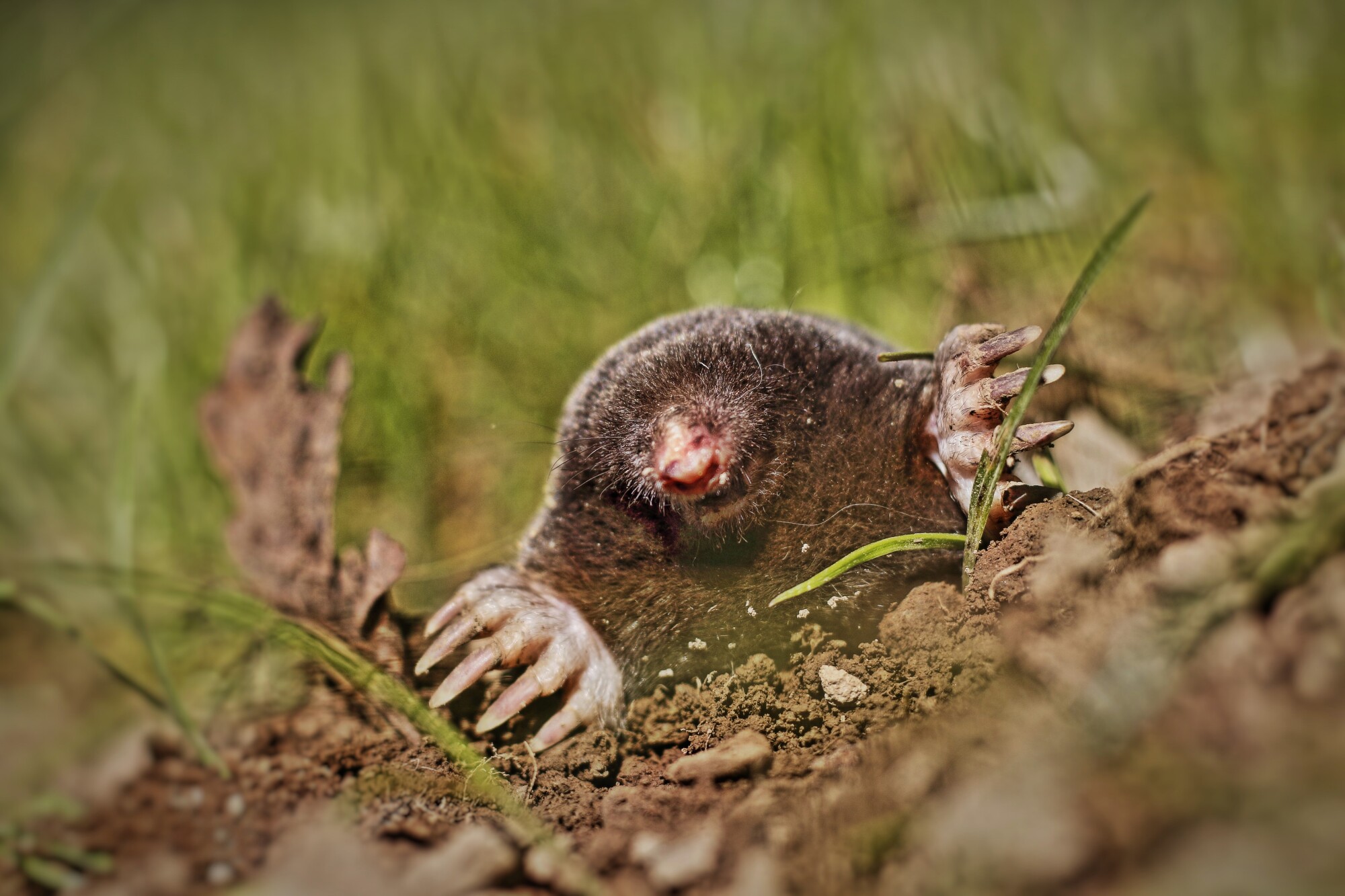
Moles are not considered to be poisonous to dogs, however, moles can make dogs sick if ingested. Moles are known to carry a variety of parasites, including roundworms and hookworms, which can be harmful to dogs if ingested. While it is rare for a dog to eat a mole, it can happen, so it is important to be aware of the risks.
In addition to parasites, moles can carry bacteria, fungi and viruses that can sicken dogs. Symptoms of infection can include vomiting, diarrhea, weight loss, and loss of appetite. If your dog has eaten a mole or appears to be ill, it is important to take them to the vet for an examination.
While it is unusual for a dog to eat a mole, there are some breeds that are more prone to hunting and eating small animals like moles. If you have a dog that is an avid hunter, it is important to be aware that they may eat a mole.
The best way to prevent your dog from getting sick from eating a mole is to keep them away from areas where moles are present. If you suspect your dog has eaten a mole, it is important to speak to your vet.
The key to keeping your dog safe from moles is to be aware of the risks, and to take action if you think your dog has eaten one. Although moles are not poisonous to dogs, they can make dogs sick if ingested.
My Dog Killed a Mole Will He Get Sick?
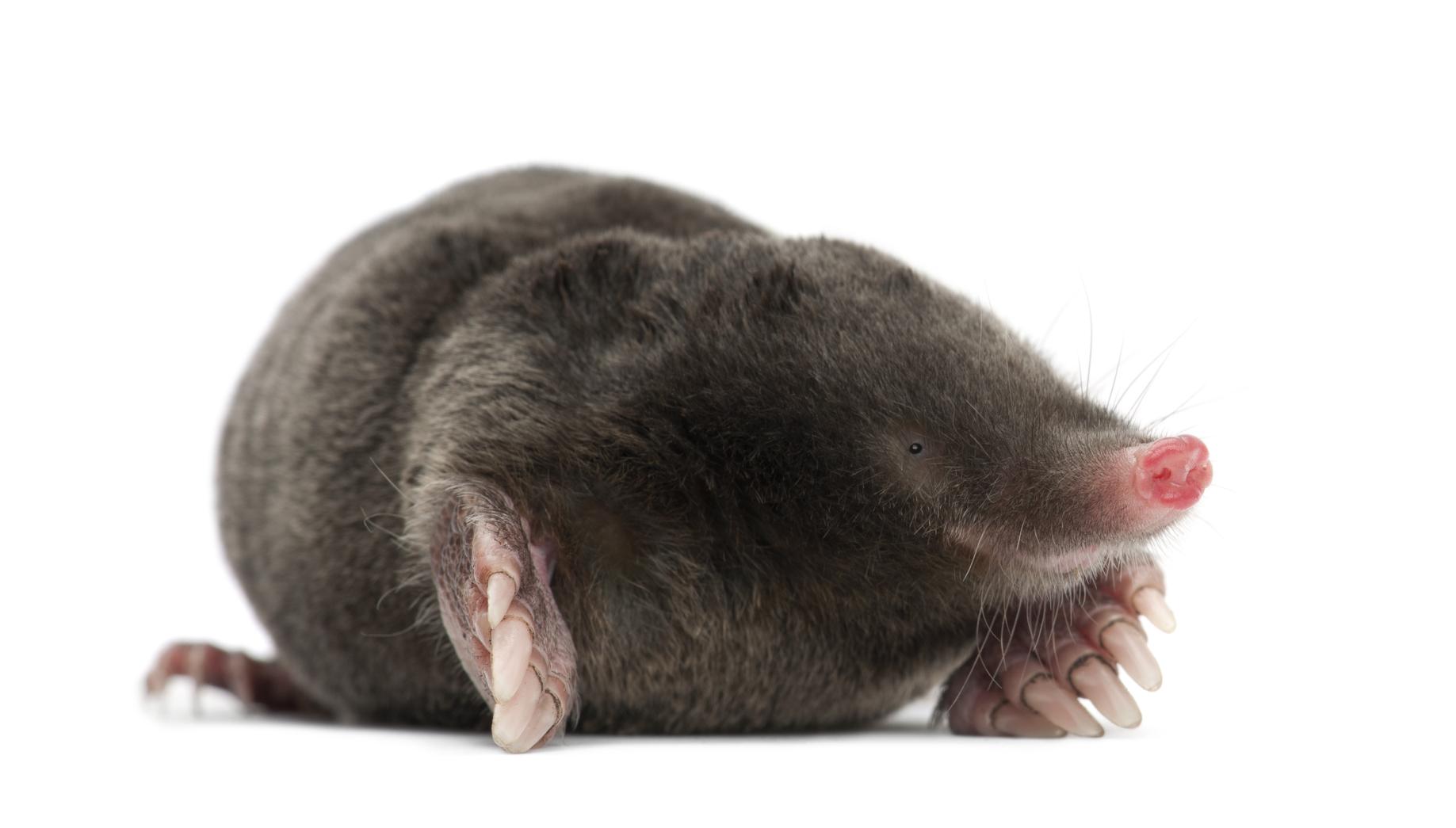
Moles are small mammals that live in burrows underground. They feed on insects, worms, and other small animals. They are generally harmless to humans and pets and can even be beneficial to gardens and lawns.
Can Moles be Poisonous to Dogs?
There is no evidence that moles are toxic or poisonous to dogs. While a dog that kills and eats a mole may have some mild digestive upset, it is unlikely to cause any serious harm. If your dog ate a dead mole, it is possible that the animal may have been exposed to any number of toxins or parasites, so it is important to watch your pet for any signs of illness, such as vomiting or diarrhea.
My Dog Killed a Mole What Should I Do?
If you find that your dog killed and ate a mole, first make sure the animal is not showing any signs of distress or illness. If your dog appears to be unwell, contact your veterinarian right away. If your dog seems to be healthy, there is no need to take any further action; however, you may want to keep an eye on your pet for any changes in behavior or appetite.
Tips to Prevent Your Dog From Eating Moles
- Keep your dog away from areas where moles are present.
- Discourage your pet from digging in the yard, as this can disturb the burrows of moles.
- If you see your dog eating a mole, interrupt the behavior and distract your pet with a toy or treat.
- Make sure your pet is up to date on its parasite prevention treatments.
My Dog Ate a Dead Mole What Should I Do?

It is important to assess the risks associated with a dead mole being consumed by a dog:
- The first risk is of the mole being infected with a parasite or bacteria.
- The second risk is of the mole being infected with a virus.
- The third risk is of the mole having been exposed to toxins or poisons, such as pesticides.
In any of these cases, it is important to take the dog to a vet for a check-up and treatment if necessary.
The vet can check for any internal parasites, bacteria, or virus, as well as any external parasites, such as fleas or ticks. If the vet finds any parasites or bacteria, the dog can be treated with appropriate medications. If the mole has been exposed to toxins, the vet can provide advice on the best way to treat the dog.
It is important to remember that moles are not poisonous to dogs and the risk of any harm is low. However, it is important to be vigilant and seek veterinary advice if the dog shows any signs of illness after eating a dead mole.
Do Moles Pose Any Other Risks to Dogs?
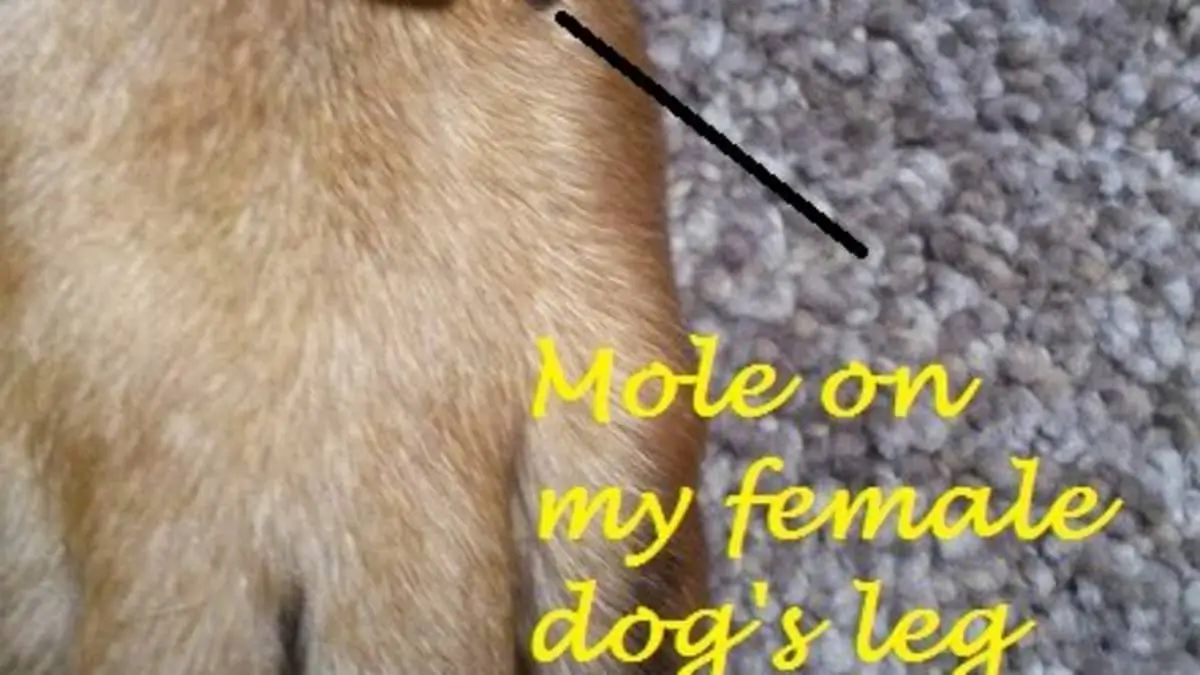
- Moles Can Carry Parasites: Moles can carry parasites, such as roundworms and tapeworms, that can be passed to your dog if they ingest the mole. Contact with these parasites can cause vomiting, diarrhea, and other digestive issues.
- Moles Can Carry Bacteria: Moles can also carry bacteria which could cause infections in dogs. Moles can carry streptococcus, staphylococcus, e. coli, and salmonella, which can cause a variety of illnesses in dogs.
- Moles Can Carry Disease: Moles can also carry a variety of diseases, such as leptospirosis, that can be passed to your dog if they ingest the mole. Leptospirosis is a bacterial disease that can cause fever, vomiting, and even kidney failure in dogs.
- Moles Can Pass Toxins: Moles can also pass toxins to your dog if they are ingested. These toxins can cause anemia, liver damage, and even death if left untreated.
How to Keep Moles Away from Dogs?
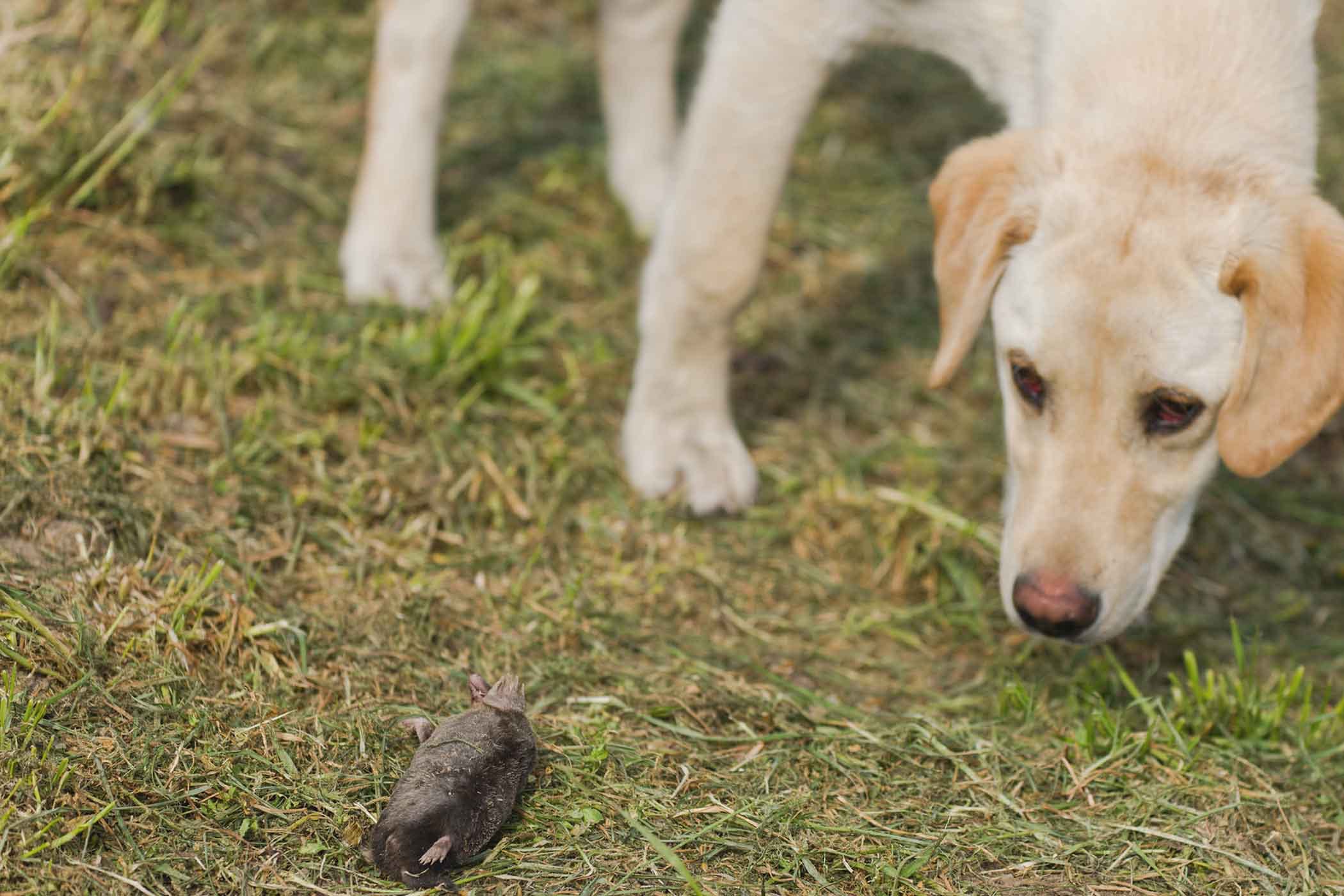
- Protect your yard: Keep your yard free of overgrown vegetation, as moles will find shelter in it. Ensure that your yard is free of any food sources that may attract moles. Moles prefer moist environments, so be sure to reduce the moisture level in your yard.
- Install barriers: Install physical barriers, such as wire mesh, around your yard to prevent moles from entering. This will also help to keep other animals out.
- Repellants: Use repellants, such as castor oil or garlic, to keep moles away from your yard. Repellants should be applied to the ground around your yard, as well as to any vegetation that may be attractive to moles.
- Traps: If the above methods are not effective, consider using traps to catch and remove moles from your yard. Be sure to use humane traps that do not harm the animals.
- Keep an eye on your dog: As a precaution, keep an eye on your dog when they are outside. If they start to dig or paw at the ground, they may be trying to uncover a mole, so be sure to keep them away from any suspicious areas.
What to Do if You Find a Mole in Your Yard?
- Moles are not poisonous to dogs. They are small mammals, typically measuring 3-6 inches long, and they are harmless to your pup. In fact, they can even be beneficial to your yards ecosystem.
- Moles are carnivores. They feed on insects such as worms, grubs, and larvae, making them a gardeners best friend. By keeping the population of these pests in check, moles can actually help keep your yard looking healthy and vibrant.
- Moles can cause extensive damage to your lawn. They dig extensive networks of tunnels and burrows, which can make your lawn look unsightly. They can also uproot grass and plants, leaving holes and patches in your lawn.
- Moles can be difficult to get rid of. While there are a few DIY methods of getting rid of moles, such as trapping and using repellents, these methods are often ineffective. It is best to contact a professional wildlife removal company to help you safely and humanely remove the moles from your property.
- Moles can be relocated. In some cases, it may be possible to safely relocate the moles to a more suitable habitat. This is usually done with the help of a wildlife removal expert and requires a permit from your local wildlife officials.
- Moles can be prevented from returning. Once the moles are removed from your property, you can help prevent them from returning by making sure your lawn is properly maintained. You should also seal off any entry points into your yard and make sure your lawn is free of grubs and other insects that moles feed on.
Frequently Asked Questions
What Signs Should I Look For To Determine If My Dog Has Been Poisoned By A Mole?
Signs to look out for include vomiting, diarrhoea, loss of appetite, lethargy, drooling, and seizures. If you notice any of these signs, seek veterinary help immediately. Additionally, watch for signs of physical contact with the mole, such as scratches, bites, or fur loss.
Are There Any Treatments Available to Help My Dog Recover From Mole Poisoning?
Treatment of mole poisoning in dogs typically involves administering activated charcoal to absorb the toxins in the stomach, followed by intravenous fluids and electrolytes to replace lost fluids. Antibiotics may also be prescribed to treat any associated infections. If the poisoning is severe, your vet may need to provide additional treatments such as stomach pumping, breathing tube insertion, and oxygen therapy. Additionally, your vet may prescribe medication to reduce vomiting, diarrhea, and pain.
Are there any long-term health effects associated with mole poisoning in dogs?
Yes, there are potential long-term health effects associated with mole poisoning in dogs. These effects may include digestive issues, liver damage, and neurological problems. If left untreated, the effects may become severe and even life-threatening. It is important to seek medical attention immediately if you suspect your dog has been poisoned by a mole.
Are there ways to prevent my dog from coming into contact with moles?
- Keep your yard well-maintained: Moles tend to reside in areas of overgrown grass or areas of thick vegetation. To prevent moles from coming into contact with your dog, keep your yard well-maintained. This means mowing and trimming your grass regularly, as well as removing any debris or thick vegetation that could be enticing to moles.
- Keep your pet on a leash: When out for a walk, keep your pet on a leash to prevent them from roaming into areas where moles may be living. If you know that a certain area has a mole problem, its even more important to keep your pet on a leash.
- Install mole repellants: Mole repellents are a great way to deter moles from coming into contact with your dog. These repellents can be found in most pet stores, garden centers, and online retailers. They typically come in the form of a spray or granules, which can be applied to the ground.
- Cover up mole tunnels: If you find mole tunnels in your yard, cover them up with a heavy duty tarp or some other material. This will prevent your pet from coming into contact with any moles that may be living underneath.
How Likely is it that My Dog Will Become Poisoned by a Mole?
No, moles are not toxic or poisonous to dogs. Moles dont possess any venom or toxins that could harm your pet, so it is highly unlikely that your dog will become poisoned by a mole.
However, there are certain risks you should be aware of. These include:
- Infection: While moles are not poisonous, they can carry diseases and parasites that can be passed on to your pet if they come into contact with a mole.
- Injury: Moles have sharp claws and teeth, so if your pet gets too close, they could get scratched or bitten.
- Allergic Reaction: A rare but possible allergic reaction could occur if your pet is exposed to a moles fur or saliva.
To keep your pet safe, it is best to keep them away from moles and their burrows. If you think your pet has been exposed to a mole, contact your veterinarian for advice.
Conclusion
Moles may be small but they can still cause a great deal of harm to dogs. While moles are not poisonous to dogs, they can still be dangerous to them due to their sharp claws and teeth. If a dog were to eat a mole, it could choke on it or the claws and teeth could cause internal damage to the dogs digestive system. It is important for pet owners to be aware of the dangers posed by moles and take the necessary precautions to protect their pets.

